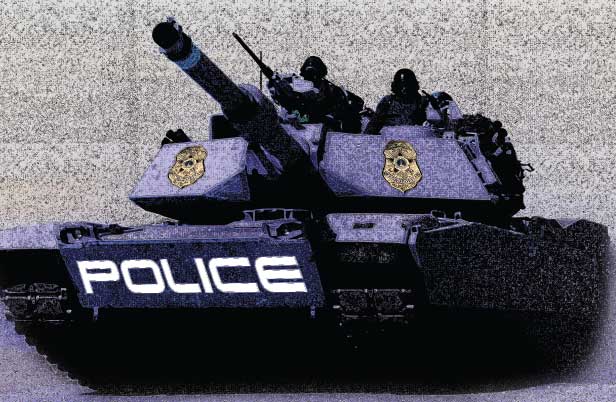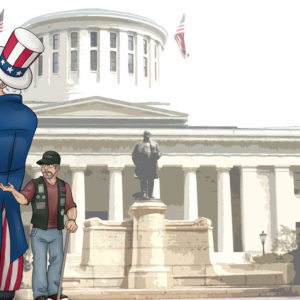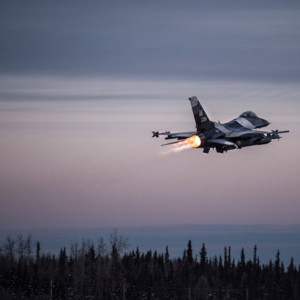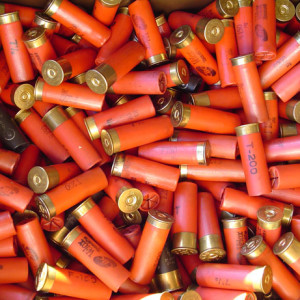
Are the Police Becoming Too Militarized?
By Tim Dees
Without a doubt, cops don’t look the way they did 30 years ago. They often wear “Class B” utility uniforms that are less dressy than the wool shirts and trousers of previous years. With rare exceptions, they’re carrying semi-auto pistols, where revolvers were the standard. Shotguns were relatively common in patrol cars, but now they are likely to be augmented with a military-style patrol rifle.
Tactical teams have changed even more. AR-15 and similar rifles were standard, and they’re still in use. But these are now augmented with MP5s, grenade launchers, and laser sights. The gear is often indistinguishable from that worn by soldiers and Marines in Iraq and Afghanistan. The old bread truck SWAT vans may now have been replaced with the same huge MRAP assault vehicles that actually were used overseas, and have now been declared surplus. When police agencies can afford to buy new, Bearcats with price tags of $200K and up may be rolling up to incidents.
Over the past few months, there have been numerous violent civil disturbances around the country, many of them mounted in protest of the killing of Michael Brown in Ferguson, MO. Cops assigned to those incidents were usually dressed in full riot gear with Kevlar helmets, military-style rifles, heavy-duty external body armor, elbow and knee protectors, and accompanied by those massive tactical vehicles I mentioned previously.
Detractors of the police, of which there are many, complain that the appearance of the cops does far more harm than good. When cops turn out in full riot gear with military weaponry and vehicles, they say it just stirs up the crowd and provokes them to greater violence.
Up until the 1970s, the worst tactical situations cops were likely to encounter were Dog Day Afternoon-like bank robberies with some crooks inside barricaded against the cops outside. The weapons were likely to be limited to revolvers, and no one even thought about body armor.
That era ended with a mischievous group of radicals called the Symbionese Liberation Army. They made their name first by assassinating some public officials in Oakland, CA, then kidnapping Patty Hearst, the daughter of a multi-millionaire newspaper publishing family. Depending on who you choose to believe, Patty was either brainwashed or just thought it would be cool to become a militant radical, and helped the SLA rob a bank herself. Not long after, the SLA was found holed up in a house in Los Angeles, and the LAPD went after them. The firefight was prolonged and deadly. None of the SLA members in the house (which had burned down, ignited by tear gas grenades) survived the battle.
This incident gave rise to a special tactical unit within the LAPD, called Special Weapons And Tactics, or SWAT. They wore military-style uniforms and carried military-style weapons. Other law enforcement agencies saw the value (or, at least, saw it as really bitchin’) and created their own SWAT-type units.
It took the better part of 20 years, but the bad guys upped their game similarly. In 1997, two men attempted to rob a Bank of America branch in North Hollywood, CA, armed with multiple rifles and handguns, and wearing heavy body armor. The cops, armed with semi-auto pistols and shotguns, couldn’t penetrate the robbers’ armor, and several cops were shot before anyone could get a few well-placed rounds on target and put the assailants down.
Two years later came the massacre at Columbine High School in Colorado. There, the first responding officers followed the training they had been given, and waited for their SWAT team to arrive before entering. By the time SWAT was on scene, several students and staff members had died of their wounds, as had the two teenagers who mounted the assault, both from self-inflicted gunshots.
Those two incidents were only harbingers of what was to come. Angry and unbalanced people, looking for a last great moment of glory and revenge against all who had wronged them, staged similar heavily armed assaults at other schools, workplaces, shopping malls, and anywhere else there were lots of people who would be good targets.
Law enforcement developed a term for these people and incidents: active shooters. They brought about a change in tactical philosophy. Cops would no more be encouraged to establish a perimeter and hold back until the tactical team arrived, maybe an hour later. Instead, they were encouraged to make entry and try to neutralize the active shooter, even if they were alone. This change in tactics has proven its worth several times since then. Even one good cop can make a difference against a heavily armed suspect, although the cop places himself at considerable risk in so doing. The ironic phrase, “that’s why we get the big money” is more popular than it used to be.
At the same time, agencies decided to give their officers the tools they might need to overcome active shooters, and deployed rifles in patrol cars. Officers carrying the rifles have to first show their proficiency with them. This sort of thing isn’t covered in the police academy. Many purchase their own rifles from an approved list of vendors.
Officers carry “go bags” in their cars, positioned so they can grab them quickly and get out. The go bags might contain loaded spare rifle and pistol magazines, eye protection, maybe a gas mask, a bottle of water or two, and an energy bar. Everyone has their own mix here.
This mirrors the philosophy of a new officer I was training. He had an unusual prior history that included ten years in the British SAS. He also distinguished himself by carrying six magazines for his sidearm, where the usual load was two. Supervisors liked to razz him about this. His response was standard: “Sir, have you ever run out of ammunition? It’s a terrible feeling.”
The tactical vehicles, which are normally used for SWAT teams, are mainly to provide cover and protection for cops entering the perimeter, and to serve as rescue vehicles to pick up wounded from exposed positions. They can also provide shelter against thrown firebombs and other deadly missiles. They may look intimidating, but they have a very real use and purpose.
Cops have upped their tactical game out of necessity. The threats are very real, increasingly common, and are as likely to occur in rural communities as in large urban ones. Police agencies regret that they may offend the delicate sensibilities of citizens who would rather not get up close and personal with active shooters and violent rioters. However, those long parades of police cars that go from the church to the cemetery offend the cops even more, and they work to make those as infrequent as possible.
Tim Dees is a retired police officer and the former editor of two major law enforcement websites who writes and consults on technology applications in criminal justice. He can be reached at tim@timdees.com.



